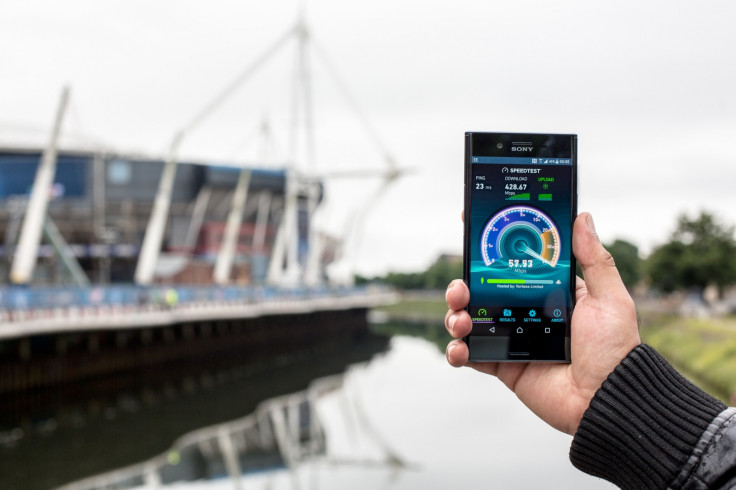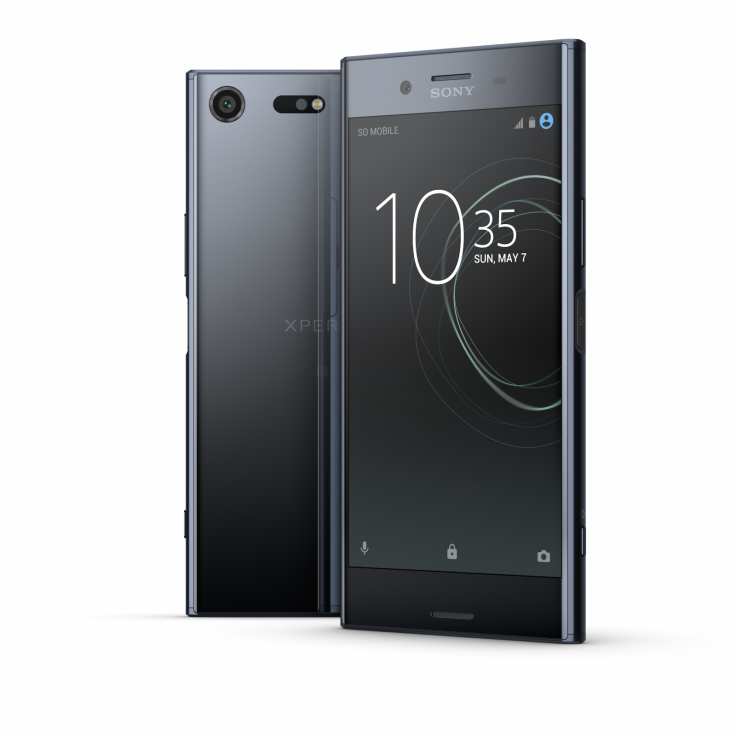EE achieves 750Mbps 4G mobile data speeds by upgrading to Gigabit LTE
The Gigabit LTE speeds demonstrated by EE, Qualcomm and Sony are twice as fast as fibre broadband.

EE has taken steps to extend its 4G network in the UK to provide faster mobile internet speeds and higher network capacity in congested cities, implementing a new technology called Gigabit LTE.
EE, together with Qualcomm and Sony, have demonstrated live upload speeds of 110Mbps and download speeds of 750Mbps at Wembley Stadium on EE's 4G network, together with the Sony Xperia XZ Premium (Europe's first commercial Gigabit LTE mobile device), powered by the Qualcomm Snapdragon 835 mobile platform.
These speeds are more than twice as fast as the current quickest commercial fibre broadband service in the UK. The mobile operator has also separately demonstrated 428Mbps in Cardiff city centre on the live 4G network.
The mobile operator has so far turned on Gigabit LTE in Cardiff city centre and London's tech city. Next, it intends to deploy the service to the rest of central London and other major cities such as Birmingham, Manchester, Edinburgh, Liverpool, Leeds and Glasgow throughout 2017 and 2018.
In laboratory tests, EE has achieved 979Mbps, and the aim is to be able to eventually offer the UK public 1Gbps speeds on 4G.
An insatiable appetite for mobile data
Everyone is looking forward to 5G, which will offer superfast mobile internet speeds enabling the streaming of 4K video content and virtual reality experiences, as well as communications networks for smart self-driving cars.
But 5G doesn't exist yet, so mobile operators are looking to extend the capabilities of their existing 4G networks, since consumer appetite for mobile broadband continues to be insatiable.

EE says that at the recent Glastonbury festival in June, users downloaded three times more than they had ever done before. A majority of the data used at the festival came from people on social media apps like Facebook, Instagram and Snapchat.
When the headline acts were playing, traffic dropped, but as soon as the acts were over, traffic spiked as people sought to upload video clips and images, particularly after The Killers' secret gig.
But there were also spikes in network traffic from people using the Sky Go app to watch the Lions rugby match between the British and Irish Lions versus the All Blacks early in the morning on Saturday 24 June, and throughout the festival, large numbers of subscribers were using the ITV Hub mobile app to catch up on the popular reality show Love Island.
How Gigabit LTE works
Gigabit LTE works by using three LTE Advanced technologies including 4x4 MIMO, 3xCA (Three Carrier Aggregation) and 256-QAM higher order modulation.
Take EE's network, for example. The operator has three frequency bands – one 1800MHz band and two 2600MHz bands. In the past, this meant that EE had three carriers, or rather three channels for carrying data traffic between mobile devices and the network.

With Gigabit LTE, each 2600MHz band now has two channels instead of one, so that makes four channels, and if you add on 1800MHz's single channel, then you get five channels in total.
Qualcomm has a good analogy – let's say EE's three carriers represent three lanes on a road. Implementing 4x4MIMO is like building a highway on top of it. It costs more, so EE will initially only roll out this technology in a city's most congested areas, but you get more lanes, which can take more cars, buses and trucks.
And if you add 256-QAM technology to that, then you have a way to organise bits of information travelling along the channels more efficiently so that the new network actually uses much less bandwidth than all previous ones.
It's not just the network that will be better either. Smartphones will likely come with four antennas, that can pick up signals from different spectrum bands and figure out the best channel to send and receive data from. The processors within devices are also more powerful, as the distance between the transistors in the chip is much shorter, only 10 nanometres, so less power is used and the computing capability goes up.
The demonstration by Qualcomm showed that even if users didn't have smartphones that supported Gigabit LTE, they still received higher speeds because the network was being more effectively managed.
"What we are introducing with this 1GB capability is big data rates. Currently you are having different user experience depending on distance from the cells etc, but with this, your average user experience will be much better in different scenarios," Qualcomm's vice president for business development Roberto Di Pietro told IBTimes UK.
"Every time you offer more latency, more data rates, if you have the throughput, people will come. More and more you have devices that can record 4K video – in the next one to one and half years, this will become the expected user experience. Gigabit LTE is definitely an intermediate step towards 5G."
© Copyright IBTimes 2025. All rights reserved.





















